
The Georgian uprising on Texel was an insurrection by the 882nd Infantry Battalion Königin Tamara of the Georgian Legion of the German Army stationed on the German-occupied Dutch island of Texel. The battalion was made up of 800 Georgians and 400 Germans, with mainly German officers. It was one of the last battles in the European theater.
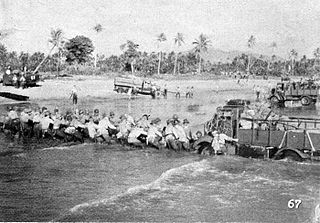
The Dutch East Indies campaign of 1941–1942 was the conquest of the Dutch East Indies by forces of the Empire of Japan in the early days of the Pacific campaign of World War II. Allied forces attempted unsuccessfully to defend the islands. The East Indies were targeted by the Japanese for their rich oil resources which would become a vital asset during the war. The campaign and subsequent three-and-a-half-year Japanese occupation was also a major factor in the end of Dutch colonial rule in the region.
During World War II, the Netherlands was the scene of five years of continuous air warfare between the Allied and the Nazis as the Netherlands lies en route from England to Germany and was designated and built up as the foremost line of Nazi air defence of Germany. Also, in 1944 there was heavy land fighting during the largest Allied airborne attack of the WWII in the south and east of the country in 1944–45. Thousands of airmen, soldiers and others of many nations were killed, and their war graves in some 4,000 locations are in the care of the Dutch War Cemetery Organisation.

The Indies Monument is a memorial in The Hague in memory of all Dutch citizens and soldiers killed during World War II as a result of the Japanese occupation (1942–1945) of the former Dutch East Indies. It is dedicated to all who died in battle, in prison camps or during forced labor. As stated in the mission statement of the 15 August 1945 Commemoration Foundation, it is also:
A place where you can pass on to your children the part of your childhood spent in the Dutch East Indies

Grebbeberg War Cemetery is a Second World War military war grave cemetery, located on the Grebbeberg, a hill 2 km (1.2 mi) east of Rhenen the Netherlands. The cemetery contains 799 military personnel and one civilian who died during the invasion of the Netherlands by the Germans in May 1940. More than 400 of those interred in the cemetery fell during the Battle of the Grebbeberg.
Frans Alfred Meeng was an Indonesian football midfielder who played for the Dutch East Indies in the 1938 FIFA World Cup. He also played for SVVB Batavia.
Crooswijk General Cemetery is a cemetery in Rotterdam, the Netherlands.
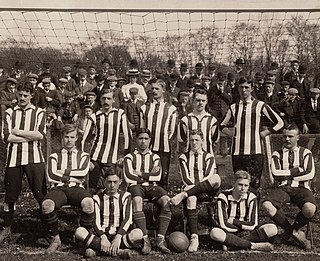
Lothar van Gogh was a Dutch footballer who played as a forward. He was part of the Netherlands national team, playing two matches and scoring two goals. He played his first match on 14 April 1907.

Johan Herman Bernhard Kuneman was a Dutch governor in the Dutch East Indies and, in his youth, a footballer. He was part of the Netherlands national team, playing one match on 25 October 1908.

Piet Tekelenburg was a Dutch footballer. He was part of the Netherlands national team, playing two matches. He played his first match on 9 June 1919.

Dutch War Cemetery Menteng Pulo, also Dutch Field of Honor Menteng Pulo, is a war cemetery at Jl. Menteng Pulo RT. 3 RW. 12, Menteng Dalam, Tebet, Jakarta in Indonesia. It is one of two Dutch war cemeteries in Jakarta, the other one is Dutch War Cemetery Ancol at Ancol. Dutch War Cemetery Menteng Pulo was built to accommodate the victims of the war from the Japanese occupation during World War II. At present it is maintained by the Netherlands War Graves Foundation, which is an organization that manages all Dutch war cemeteries in the world.
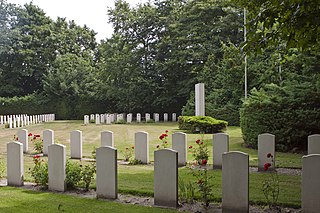
The Belgian Military Field of Honour 1914–1918, is a burial site located at the Oostergaarde Cemetery of the Dutch city Harderwijk in Gelderland. Originally, thirty-six soldiers were buried at the site. Nowadays, 349 Belgian soldiers from the First World War are commemorated. These include 124 individuals whose names feature on a monument because their remains could not be retrieved anymore. The cemetery was inaugurated on 28 September 1963 by the Belgian ambassador. The gravestones are similar to the ones used by the Commonwealth War Graves Commission and are varying from the official Belgian gravestones. The burial site is administered by the Dutch Oorlogsgravenstichting.
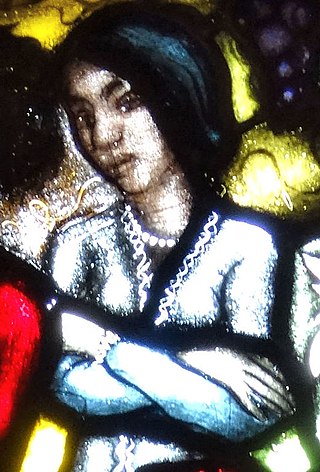
Melisande Tatiana Marie (Anda) Kerkhoven was a woman who joined the resistance during World War II. She was an important courier of the ‘De Groot’-group of Gerrit Boekhoven in Groningen. On 19 March 1945 she was shot by Dutch accomplices of the Sicherheitsdienst.

Henri Baaij was a Dutch footballer who played for HFC Haarlem. He was part of the Netherlands national team, playing two matches in 1921.

Franciscus Cornelis Gerardus "Fred" van der Poel was a Dutch military officer, and a football goalkeeper. He played one match for the Netherlands national football team in 1923. During World War II, he was taken prisoner of war by Japan and worked on the Burma Railway. He survived and fought in the Indonesian National Revolution on the Dutch side.

Dutch War Cemetery Kembang Kuning, also Dutch Field of Honor Kembang Kuning, is a war cemetery in Surabaya, East Java in Indonesia.

Dutch War Cemetery Candi, also Dutch Field of Honor Candi, is a war cemetery in the hills of Semarang, Central Java in Indonesia. Candi is one of two Dutch war cemeteries in Semarang, the other being Dutch War Cemetery Kalibanteng.

Dutch War Cemetery Kalibanteng, also Dutch Field of Honor Kalibanteng, is a war cemetery in the vicinity of the airport of Semarang, Central Java, in Indonesia. It is one of two Dutch war cemeteries in Semarang, the other being Dutch War Cemetery Candi.

Dutch War Cemetery Pandu, also Dutch Field of Honor Pandu, is a war cemetery in Bandung, West Java, in Indonesia.
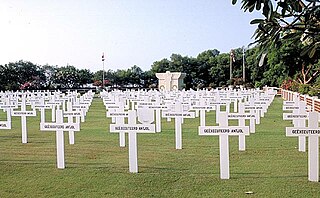
Dutch War Cemetery Ancol, also Dutch Field of Honor Ancol, is a war cemetery in Ancol, Jakarta, in Indonesia. It is one of two Dutch war cemeteries in Jakarta, the other being Dutch War Cemetery Menteng Pulo in Tebet. The cemetery was inaugurated on 14 September 1946. More than 2,000 victims of the Pacific War are buried here, including 1,328 members of the resistance against the Japanese occupation of the Dutch East Indies.


















